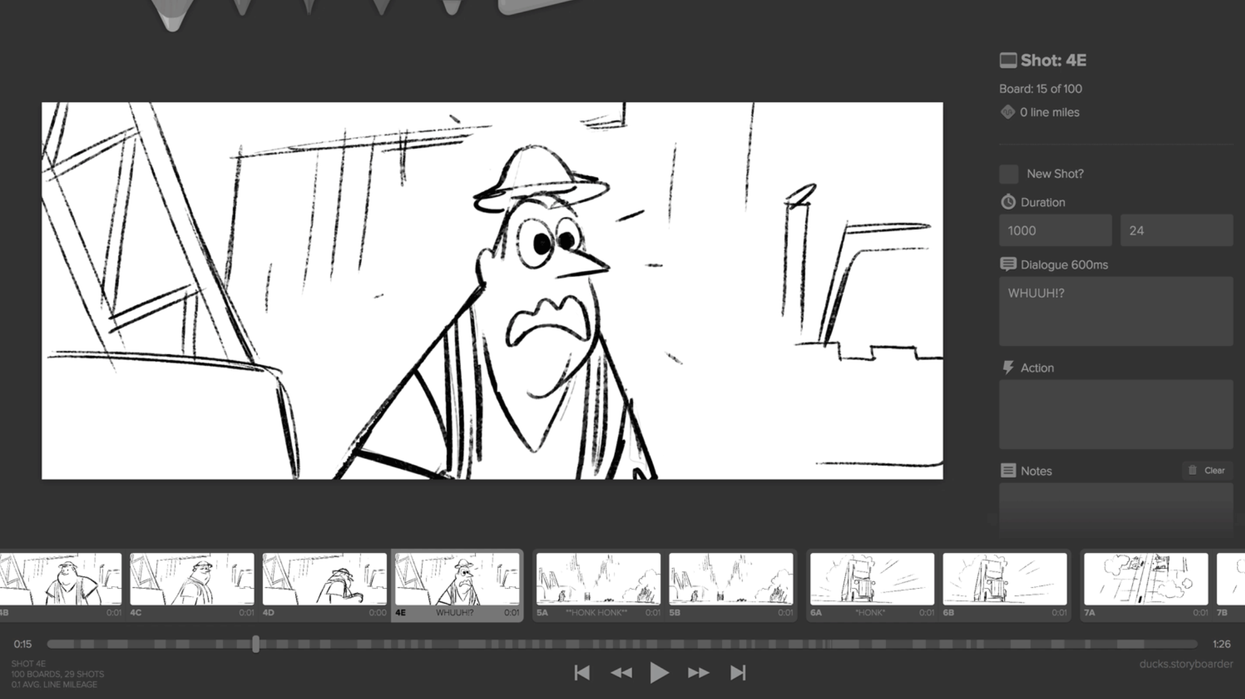Download FREE Storyboard Software and Visualize Your Story Now
Wonder Unit's Storyboarder is free, open-source storyboard software that allows artists of all types to create boards and animatics. And even improve the code.

Ever wanted to visualize your story through storyboards and animatics, but thought you needed to buy expensive software first?
As Wonder Unit, maker of Storyboarder, says on its website, "Fuck those guys."
Storyboarder is free, open-source storyboarding software that lets you quickly draw storyboards and turn them into animatics. Can you draw a stick figure? Then you can use Storyboarder. The intuitive interface includes six drawing tools, shot duration, and sections for dialogue, action, and notes. For more detailed drawings, you can click the Edit in Photoshop button, make all of your changes, and when you save in Photoshop, your storyboard will automatically update in Storyboarder.
Here are five more reasons you need to check out Storyboarder:
1. Import hand-drawn storyboards with your smartphone
Do you prefer to draw storyboards on paper? Storyboarder lets you print out blank storyboard worksheets with QR codes that you can use for traditional storyboard drawings, then lets you import those automatically by taking a picture with your smartphone.
2. Storyboard software that lets you export
Storyboarder allows you to export your storyboards to Final Cut Pro, Premiere, Avid, animated GIF and PDF contact sheets so you can share your work with all of your collaborators in their preferred format.
3. You don't even have to draw to create storyboards
Can't draw at all? Not even stick figures? (That's sad.) Storyboarder can generate shots for you using its Shot Generator tool. Simply enter some keywords or use their multiple drop-down menus to configure the shot you need.
4. Set a timer to get shit done
If you need to focus on getting storyboards done, set a timer with Sketch Sprint and get to work! At the end of time, Storyboarder will create an animated GIF of all of your hard work to show you your progress and make you feel good about yourself.
5. Edit the source code
Finally, if Storyboarder doesn't help you create storyboards exactly the way you like to work, you can make improvements to the open-source code and share with the rest of the community.
To learn more about Storyboarder or to download a free copy for yourself, head on over to its website.
Up next
Check out 5 important tips to make you a great storyboard artist, learn directly from the Coen brothers storyboard artist, and gain even more insight into storyboarding with these useful tips.
Source: Wonder Unit












